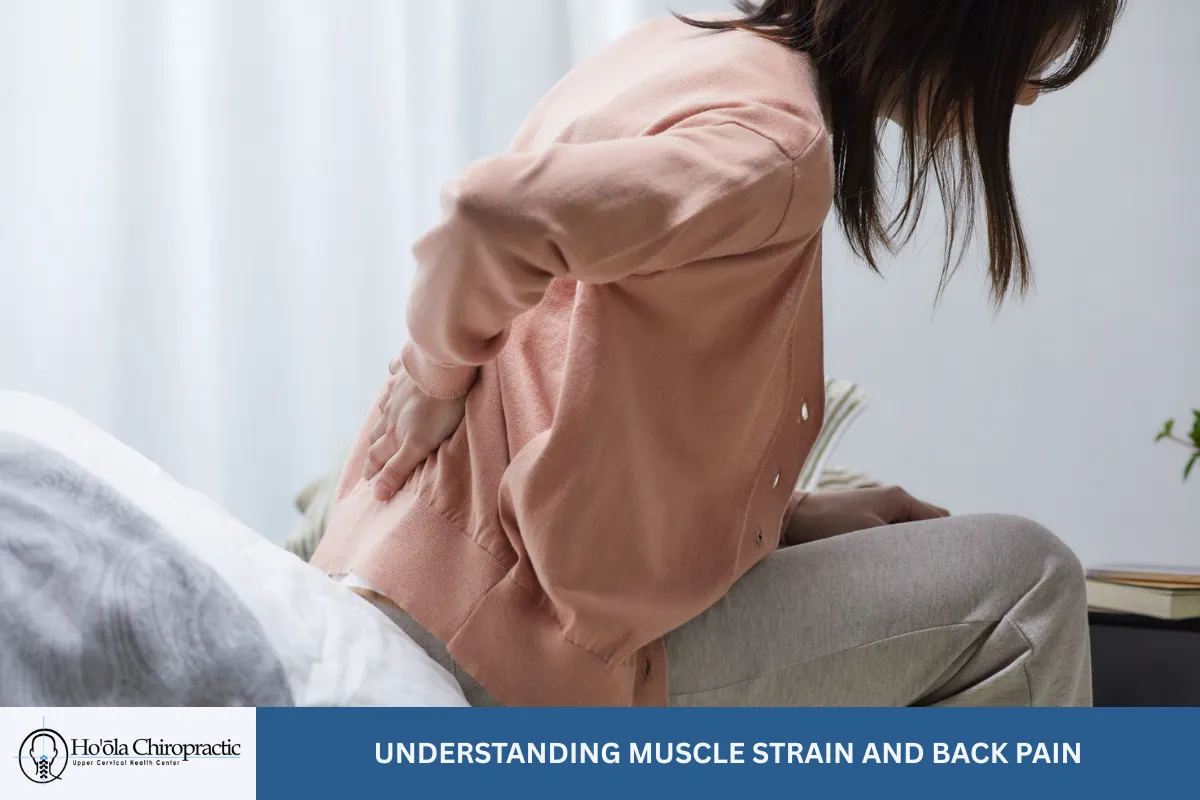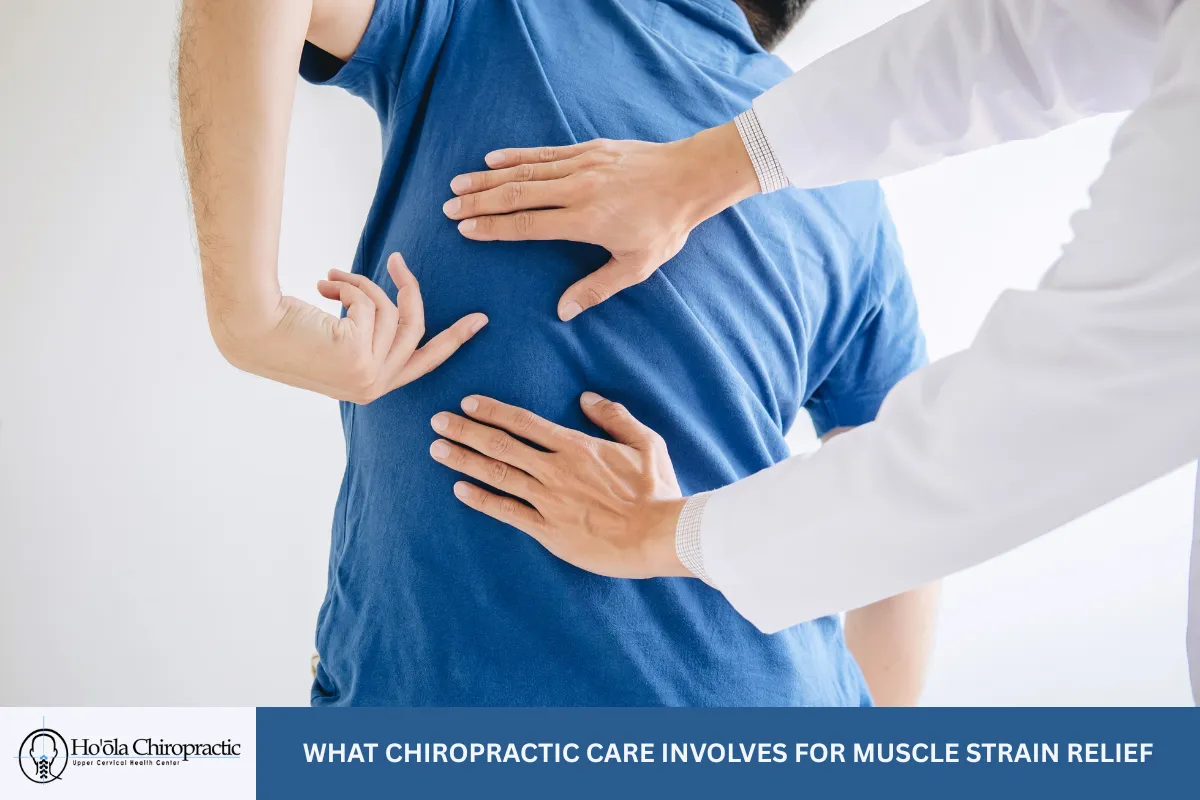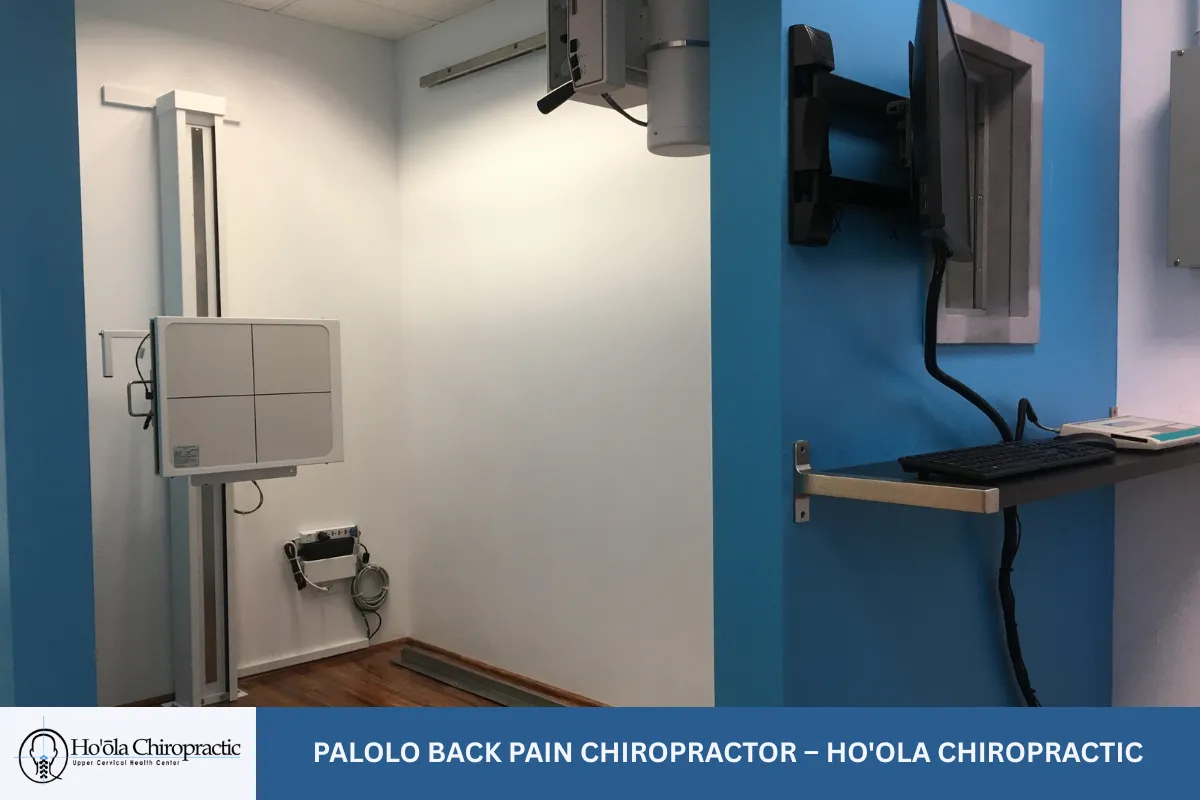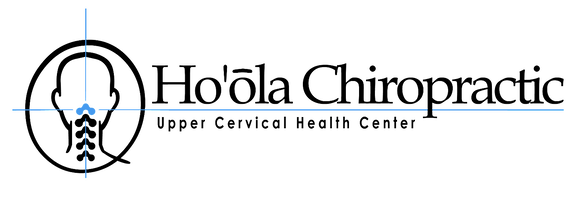A back pain chiropractor is often the professional people turn to when tight muscles, stiff joints, and daily aches start affecting how they move, sleep, and live. In Palolo, Honolulu, where the active lifestyle, hilly terrain, and humid climate can wear on the body over time, muscle strain is incredibly common. Yet, many continue pushing through the discomfort without realizing that the pain they're feeling could be a sign of something deeper—something a chiropractor can help fix.
This article explains the most common signs your body is giving you that it's time to visit a chiropractor for back pain and muscle strain. Each section digs deep into the physical signals, underlying causes, and long-term consequences of ignoring pain, while also helping you understand what chiropractic care truly offers.
Understanding Muscle Strain and Back Pain

Muscle strain happens when muscle fibers are overstretched or torn, often due to sudden movements, poor posture, or repetitive use. In the back, this strain can create a dull, throbbing ache, sudden sharp pain, or even tightness that limits your mobility. Over time, untreated muscle strain can lead to imbalances in the body, as other muscles begin to overcompensate, which places extra stress on your spine and joints.
Back pain caused by muscle strain might start small. Still, if you keep doing the same daily activities—carrying groceries, bending over to tie your shoes, or sitting at a desk for long hours—it can lead to a more serious, chronic condition.
Persistent Back Pain That Doesn’t Go Away

One of the biggest red flags that you need chiropractic help is when pain lingers beyond a few days. A sore back that doesn’t improve with rest, stretching, or heat may indicate more than just tired muscles. It often means the strain has affected the soft tissue surrounding your spine or caused joint misalignment.
A chiropractor addresses this by using precise spinal adjustments to realign vertebrae and reduce the tension pulling on muscles and nerves. This helps the body heal without needing medication or surgery, while also preventing the pain from returning.
Reduced Flexibility or Range of Motion
If you’ve noticed it’s getting harder to bend forward, twist, or even turn your head, muscle strain could be restricting your range of motion. Tight, inflamed muscles around the spine can limit joint flexibility and make every movement feel stiff or painful.
Chiropractors are trained to assess where that restriction is coming from—whether it’s a joint out of place, nerve pressure, or a soft tissue injury. With consistent treatment, your body can gradually regain its full range of motion, making everyday tasks feel easier and more natural again.
Pain That Travels to Other Parts of the Body

Back pain doesn’t always stay localized. In some cases, the discomfort starts in your lower back but spreads to your hips, thighs, or even feet. This kind of pain often signals that a nerve is being compressed or irritated, which is common with muscle strain around the spine.
Pain that radiates or causes numbness, tingling, or weakness is serious and should not be ignored. Chiropractors understand how spinal alignment impacts the nervous system and can use adjustments to relieve pressure from irritated nerves, easing the radiating symptoms.
Muscle Stiffness After Rest or Sleep
Waking up in the morning with a stiff or sore back isn’t just part of getting older. It’s often a sign that your spine was under stress while you slept—or that your muscles didn’t fully recover overnight due to inflammation or poor posture.
A chiropractor helps you understand how your daily habits, sleep position, and spinal alignment are contributing to that morning pain. With adjustments and guidance on ergonomics, your body can move more freely and recover more effectively while you rest.
Recurring Muscle Spasms or Sudden Tightness

Muscle spasms are brief, involuntary contractions that can be painful and alarming. These often occur when the back muscles are overworked or when spinal misalignment causes nerves to misfire. Spasms might show up during exercise, after lifting something heavy, or even just from standing up too quickly.
Spinal adjustments help reduce the tension that triggers these spasms. At the same time, therapeutic exercises from your chiropractor can strengthen the surrounding muscles to prevent them from recurring.
Difficulty Sitting or Standing for Long Periods
Spending too much time seated or on your feet can put strain on your back—especially if your spine isn’t properly aligned. If sitting for an hour leads to discomfort or standing feels like a chore, it's a good indication that your musculoskeletal system isn’t working efficiently.
A chiropractor identifies whether your spine, pelvis, or surrounding muscles are out of balance and provides care to support healthy posture and alignment. The result is less fatigue, more stamina, and better comfort during daily activities.
Headaches That Originate in the Neck or Upper Back

Tension in the upper back, shoulders, or neck can easily lead to headaches. These aren’t caused by dehydration or noise—they’re muscular or nerve-related, and often come from poor posture or spinal issues.
Chiropractors can gently adjust the cervical spine (neck area) to relieve the pressure and muscle tension causing these headaches. Regular care can also improve posture, reducing future occurrences of this kind of pain.
A Noticeable Change in Your Posture
If your shoulders are rounding forward, your lower back is arching too much, or your head constantly leans toward your screen, your posture might be affecting your back health. These shifts in alignment force certain muscles to work harder than others, leading to strain.
Postural issues develop slowly but can have lasting effects on spinal health. A chiropractor helps realign your spine and provides exercises to strengthen core and postural muscles, helping you naturally maintain better body mechanics over time.
Previous Injury That Was Never Properly Treated

Even minor injuries from years ago—like slipping on a wet floor or tweaking your back during sports—can leave lasting imbalances in your spine and muscles. If your back pain seems to come and go, or always affects the same area, it's possible an old injury wasn’t fully resolved.
Chiropractors are trained to identify chronic compensations in your body and help you finally address the root of the problem rather than just managing symptoms.
You’re Becoming Dependent on Pain Medications
Taking over-the-counter medication every day to manage back pain isn’t sustainable. Pain relievers don’t address the cause—they only block the sensation temporarily. Long-term use can also come with side effects or decrease your body’s natural healing response.
Chiropractic care offers an alternative by treating the musculoskeletal imbalances that lead to pain. Many patients find that regular chiropractic visits reduce or eliminate their need for daily medication.
What Chiropractic Care Involves for Muscle Strain Relief

A chiropractic visit typically begins with an in-depth evaluation of your symptoms, health history, and lifestyle habits. The chiropractor performs physical tests to assess your posture, flexibility, and spinal alignment.
From there, you may receive spinal adjustments—gentle, controlled movements that restore proper alignment and reduce stress on muscles and nerves. Some chiropractors also use therapeutic tools like soft tissue therapy, stretching, or guidance on ergonomic habits to support healing outside the clinic.
Over time, your muscles become less inflamed, your joints move more freely, and your body starts functioning the way it was designed to.
Making Chiropractic Part of Your Long-Term Health Routine
Chiropractic care doesn’t need to stop once the pain is gone. Many people in Palolo make it part of their long-term wellness routine, using regular adjustments to prevent future muscle strain and keep their body in balance.
By keeping your spine in proper alignment, you reduce the stress placed on muscles and joints. This leads to better performance in physical activities, faster recovery from daily wear and tear, and fewer interruptions due to discomfort.
Time to Stop Ignoring the Signs
Muscle strain may seem like a minor issue at first, but your body is always trying to communicate. The signs—stiffness, pain, limited mobility—are early warnings that something’s not right. The longer those signs go untreated, the harder they become to reverse.
Getting help from a chiropractor is not just about pain relief. It’s about restoring function, preventing further injury, and giving your body the alignment it needs to heal on its own. If even one of the signs mentioned in this article sounds familiar, now is the time to take action and make chiropractic care a part of your routine.
Palolo Back Pain Chiropractor – Ho'ola Chiropractic

For anyone dealing with muscle strain or persistent back pain in Palolo, Ho'ola Chiropractic offers expert care with a personal touch. Our clinic provides chiropractic solutions for everything from back pain and migraines to vertigo, neck pain, and muscle tension. Every patient receives individualized attention and natural care that focuses on restoring their body's ability to heal.
Led by Dr. Luke, we make it a priority to ensure every visit feels comfortable and welcoming. We help remove nerve interference, improve spinal function, and support your body’s natural healing process. Call us today at (808) 772-8284 to schedule your first appointment and begin your path to long-term relief!
Frequently Asked Questions About Chiropractic Care for Back Pain
1. How does chiropractic care improve lower back pain caused by muscle imbalances or injury?
Chiropractic care addresses the root causes of lower back pain by realigning the spine and correcting muscle imbalances. When you suffer from poor posture, lifting heavy objects incorrectly, or dealing with muscle tightness, the lumbar spine becomes stressed. This can lead to spinal misalignment, which affects the muscles supporting the spine and disrupts the musculoskeletal system.
A chiropractor performs manual manipulation and spinal adjustments to reduce this pressure. These techniques help restore joint mobility, improve blood flow, and relieve nerve irritation caused by nerve compression. When muscles become overactive or weak due to misalignment, pain follows.
With consistent care, patients notice less discomfort, improved posture, and better sleep quality. In some cases, chiropractors may integrate physical therapy techniques to reinforce proper movement and flexibility. This comprehensive approach supports the body’s natural healing and prevents long-term issues like chronic pain and disc problems.
2. Can chiropractic adjustments help with thoracic spine issues and mid-back pain?
Yes, chiropractic adjustments are highly effective for addressing pain in the thoracic spine, which spans the upper and mid-back. Mid-back pain is often caused by poor posture, repetitive strain, or injuries that disrupt normal joint mobility. Over time, this can cause muscle tightness, nerve compression, and reduced function of the nervous system.
A skilled chiropractor uses spinal manipulation to correct joint restrictions in the thoracic area. These adjustments relieve pressure, ease tension in the surrounding muscles, and help restore normal range of motion. This is particularly helpful for individuals experiencing forward head posture, tight shoulders, or stiffness after long periods of sitting.
In some cases, soft tissue manipulation is combined with adjustments to improve flexibility and muscle balance. Patients often report enhanced mobility, reduced discomfort, and increased ability to perform daily activities without restriction. Correcting these issues early prevents them from worsening into more serious spinal or nerve conditions.
3. What’s the connection between herniated discs and nerve pain? Can chiropractic help?
Herniated discs occur when the soft inner portion of a spinal disc pushes through its tough exterior, often pressing on nearby nerves. This can lead to sharp, radiating pain, numbness, or tingling—especially in the legs or arms, depending on the location of the disc. The pain typically stems from nerve compression and nerve irritation.
Chiropractic care focuses on gently realigning the spine to reduce pressure on the nerve and ease inflammation around the affected disc. While chiropractors don’t “cure” a herniated disc, they can relieve pain through spinal manipulation, improve blood flow, and encourage disc reabsorption over time.
In cases involving the lumbar spine, a chiropractor may use techniques that avoid direct force on the area, ensuring safety. Many patients find substantial pain relief without relying on medication or surgery. Additionally, chiropractors can offer posture training and strengthening exercises to protect the spine and prevent future disc-related problems.
4. Can chiropractic treatment help with conditions beyond back and neck pain?
Absolutely. While back pain and neck pain are the most common complaints, chiropractic care also addresses a wide range of musculoskeletal and neurological issues. One such example is frozen shoulder syndrome, which causes pain and limited mobility in the shoulder joint. Chiropractors use soft tissue manipulation, joint mobilization, and stretching techniques to restore movement and reduce inflammation.
Other treatable conditions include:
- Tension headaches and migraines
- Poor sleep quality due to spinal tension
- Forward head posture and related pain
- Spinal stenosis, which narrows spinal canals and compresses nerves
Chiropractic care supports overall nervous system function, making it beneficial for managing stress, boosting immune response, and improving flexibility. By restoring joint mobility and reducing spinal stress, chiropractic care enhances the body’s ability to heal from injury and manage chronic conditions naturally—without drugs or surgery.
5. How does chiropractic care differ from physical therapy for chronic back pain?
While both chiropractic care and physical therapy aim to relieve chronic back pain, they use different methods and philosophies. Chiropractic care primarily focuses on spinal alignment and how misalignments affect the nervous system. Chiropractors use techniques like manual manipulation, spinal adjustments, and soft tissue therapy to correct spinal misalignment and restore balance to the musculoskeletal system.
Physical therapy, on the other hand, centers on rehabilitating injured muscles and joints through guided exercises, stretches, and modalities like ultrasound or electrical stimulation. It’s highly effective for regaining strength, improving flexibility, and re-educating proper movement patterns.
In many cases, combining both approaches yields the best results. For example:
- Chiropractic care reduces immediate pain and nerve pressure.
- Physical therapy strengthens weak areas and corrects movement habits.
Patients with muscle imbalances, disc problems, or poor posture often benefit from this combined strategy. A comprehensive plan can reduce dependency on medication and provide long-term relief from chronic pain.
Read more: When to See a Chiropractor for Disc-Related Back Pain in Palolo, Honolulu, Hawaii



